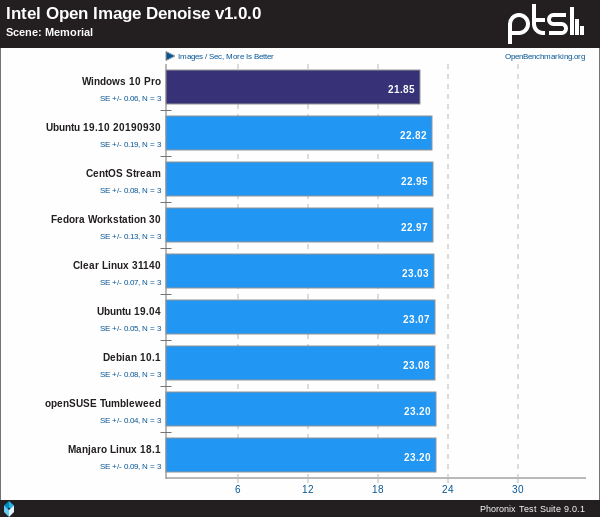

- Intel open image denoise how to#
- Intel open image denoise install#
- Intel open image denoise full#
- Intel open image denoise code#

Plug the noisy image, denoising normal and denoising albedo into the corresponding inputs of the denoise node, then plug the denoise node to the output node. Go to the compositing workspace and add a denoise node. Here, check the denoising data checkbox and render your image.
Intel open image denoise how to#
How to use Intel denoiser in Blender? Before you render, go to the view layer tab in the properties panel and find the passes section. In this article we will take a closer look atthe Intel denoiser that was recently added to Blender and see how we can use this feature. AI can now look at an image and determine what is noise and what isn't with very good accuracy. One technology that allowed this is denoising. with the prefix denoised_ the image test.jpg will become denoised_test.Render times have come down significantly over the last couple of years. OUTPUT_PREFIX – a prefix which is prepended to the name of the image to create the output name.
Intel open image denoise full#
Intel open image denoise code#
Save the following code into a file named Sequence.bat and place it into the directory where your images are saved. It will do the most simple denoising without any feature AOVs. Noisy imageĪs it has been widely requested here is a very simple batch script for denoising sequences until I have time to implement something proper into the application itself. These can can also be found in the image folder of this repository. Here is a quick example scene that uses the image from the original OIDN repository. Please refer to the originial OIDN repository here for more information. The denoiser also prefers images rendered with a box filter or by using FIS. Generally the more information the denoiser has to work with the better. All images should be the same resolutions, not meeting this requirement will lead to unexpected results (likely a crash).įor best results provide as many of the AOVs as possible to the denoiser. If you also have them, you can add an albedo AOV or albedo and normal AOVs to improve the denoising. You need to at least have an input and output for the app to run. -h/-help : Lists command line parameters.-clean_aux : Whether the auxiliary feature (albedo, normal) images are noise-free recommended for highest quality but should not be enabled for noisy auxiliary images to avoid residual noise (default 0 i.e.-maxmem : Maximum memory size used by the denoiser in MB.-repeat : Execute the denoiser N times.This pins virtual threads to physical cores and can improve performance (default 0 i.e. -t : number of threads to use (defualt is all).-srgb : whether the main input image is encoded with the sRGB (or 2.2 gamma) curve (LDR only) or is linear (default 0 i.e.Disabling with will assume the image is in sRGB (default 1 i.e. -n : path to input normal AOV (optional, requires albedo AOV).-a : path to input albedo AOV (optional).-v : log verbosity level 0:disabled 1:simple 2:full (default 2).
Intel open image denoise install#
The build uses scons so all you need to do is install scons and run it with the Sconstruct in the root of the directory. You can find a pre-built windows distribution in the releases tab of this repro.īuilding the source code is pretty simple. This is essentially an implmentation of the example executable provided in the original repository but instead uses OIIO so that a larger variety of image formats are supports.

This is a simple implementation of Intels Open Image AI denoiser. Intel Open Image Denoiser command line tool


 0 kommentar(er)
0 kommentar(er)
